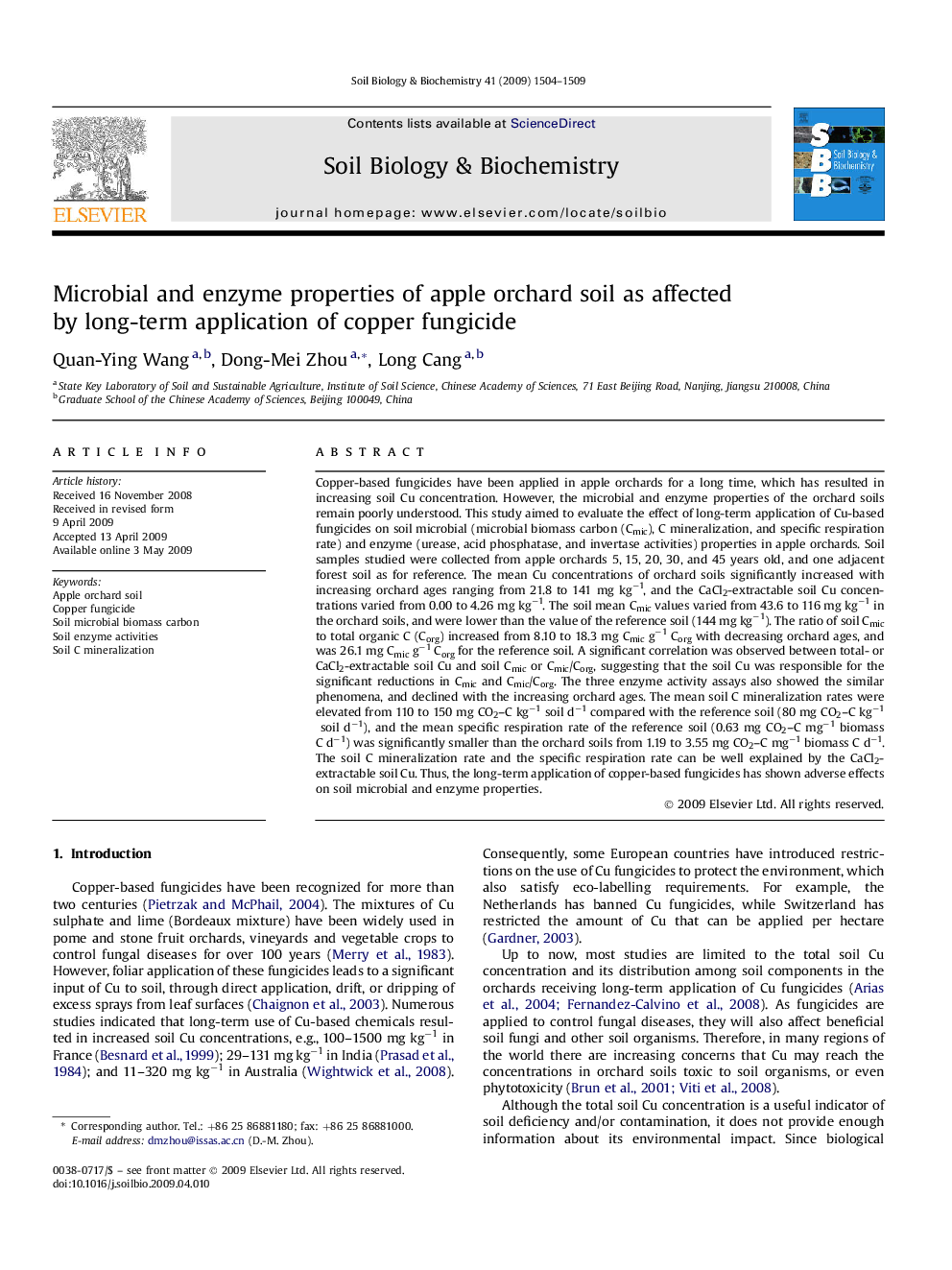| Article ID | Journal | Published Year | Pages | File Type |
|---|---|---|---|---|
| 2025214 | Soil Biology and Biochemistry | 2009 | 6 Pages |
Copper-based fungicides have been applied in apple orchards for a long time, which has resulted in increasing soil Cu concentration. However, the microbial and enzyme properties of the orchard soils remain poorly understood. This study aimed to evaluate the effect of long-term application of Cu-based fungicides on soil microbial (microbial biomass carbon (Cmic), C mineralization, and specific respiration rate) and enzyme (urease, acid phosphatase, and invertase activities) properties in apple orchards. Soil samples studied were collected from apple orchards 5, 15, 20, 30, and 45 years old, and one adjacent forest soil as for reference. The mean Cu concentrations of orchard soils significantly increased with increasing orchard ages ranging from 21.8 to 141 mg kg−1, and the CaCl2-extractable soil Cu concentrations varied from 0.00 to 4.26 mg kg−1. The soil mean Cmic values varied from 43.6 to 116 mg kg−1 in the orchard soils, and were lower than the value of the reference soil (144 mg kg−1). The ratio of soil Cmic to total organic C (Corg) increased from 8.10 to 18.3 mg Cmic g−1 Corg with decreasing orchard ages, and was 26.1 mg Cmic g−1 Corg for the reference soil. A significant correlation was observed between total- or CaCl2-extractable soil Cu and soil Cmic or Cmic/Corg, suggesting that the soil Cu was responsible for the significant reductions in Cmic and Cmic/Corg. The three enzyme activity assays also showed the similar phenomena, and declined with the increasing orchard ages. The mean soil C mineralization rates were elevated from 110 to 150 mg CO2–C kg−1 soil d−1 compared with the reference soil (80 mg CO2–C kg−1 soil d−1), and the mean specific respiration rate of the reference soil (0.63 mg CO2–C mg−1 biomass C d−1) was significantly smaller than the orchard soils from 1.19 to 3.55 mg CO2–C mg−1 biomass C d−1. The soil C mineralization rate and the specific respiration rate can be well explained by the CaCl2-extractable soil Cu. Thus, the long-term application of copper-based fungicides has shown adverse effects on soil microbial and enzyme properties.
